There is a liturgy in the art of conserving the sea, of the salting of the fish, or dried fish, as they call it in some places, which elevates it to a sacred level. It may be the silence, that of waiting, well be on the fishing boat or on the you will fly ceutis, where the fish hangs, the one that endows this ancient technique with magic, which arrived in Spain with the Phoenicians.
This is a route through spanish coastline, from the Galician estuaries to the south, passing through Ibiza, Formentera, Lanzarote and Tenerife. It's the journey through the coastal lands of salting , divided into three stages: Galicia and Cantabrian, Mediterranean and Balearic Islands and closure in the South Atlantic with the Canarian jargon impregnated with salt.
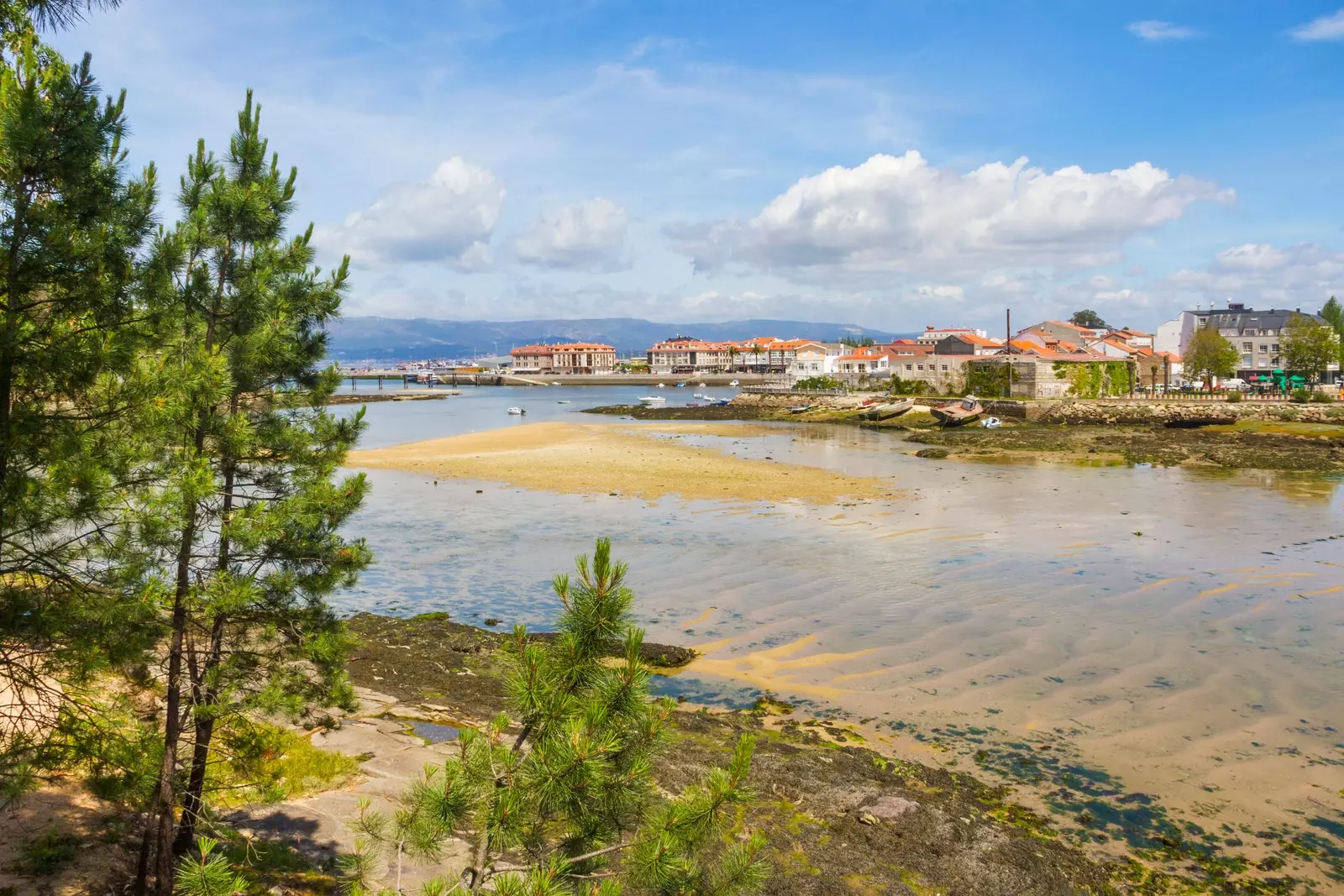
Vilanova de Arousa, Galicia.
That the route begins in Galicia is not only for geographical reasons. The gastronomic chronicle in the northwest of our country speaks of a canning industry heiress of old fish salting sheds. The setting: the Arousa estuary. There, different families made its coastline a canning bastion at a national level. since the end of the 19th century. One of them, the Lafuente family.
In Vilanova de Arousa (Pontevedra) , on the banks of the homonymous estuary, was founded in 1904 one of the oldest family businesses of the Galician canning sector. There the minerality of the north currents led to Francisco "Paco" Lafuente Torrón and another fishing family from the town to found their canning company. Today, the fourth generation is embodied by two cousins, Francisco "Fran" and Ramón Lafuente.
"In the first moment our family it was dedicated exclusively to salting, the conservation method of the time”. This was a context in which the canning industry in the area moved catalan families, that due to the exhaustion of the raw material in the Mediterranean they emigrated to the Galician land. The document reflects this very well. The families of the preserve, by Xoan Carmona Badía, that portrays the canned fish sector through each family legacy, where the Lafuente family is part of one of the epigraphs.
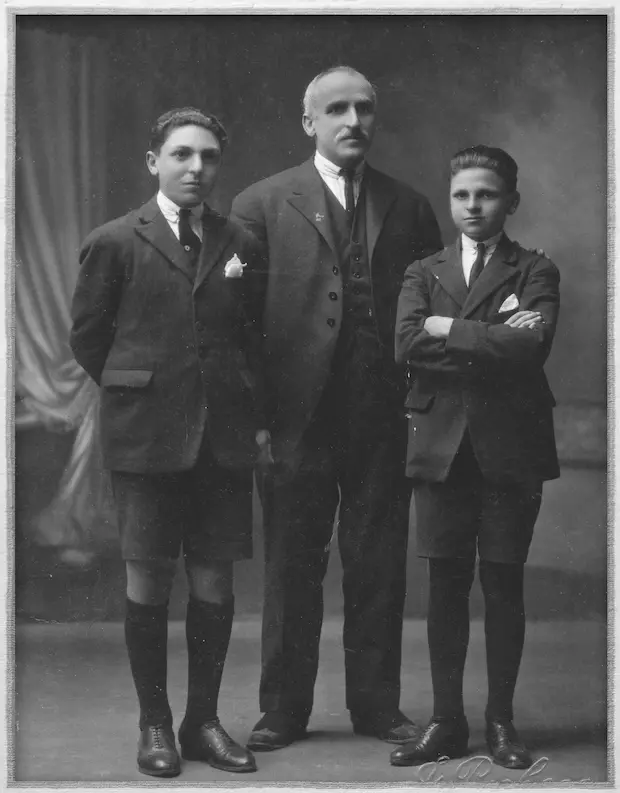
Paco Lafuente and children, 1922.
“In the First World War there was a boom on the canning issue, and this is when the salting families of Vilanova and surroundings were very successful, they supplied a lot to the French market”. The photo from the beginning salting in Galicia it is that of small boats buying fish from a mother ship.
“Here the sardines, which was what was produced, were put for the first time in salt and with that shipment they went to the port of Vilanova, to take it to the factories, where the women handled the fish. We have had mothers and daughters working with us. There they put the sardines in drums of 6,000-7,000 liters and they left it in brine for a month or two."
And then the magic happened. The sardine, which was what they worked on, was beginning to dehydrate. From there, head and all, they were taken out of the brine, put on wooden boards and sent to grocery stores, where they were sold in bulk.
“Since the whole town has lived from the canneries, you still meet older people sitting on the bench in front of the factory telling you that I worked for your great-uncle”.
Fran refers to Francisco Lafuente González, the founder's son, his great-grandfather, a former cooper at a local salting factory. “In the town he is remembered always dressed in white , with a hat and a carnation on his lapel”. Great-uncle and grandfather of Fran, Francisco and Manuel Lafuente, would continue until 1960 with salting, "But when hermetic canning began to take center stage, they opted for this, with large formats for the hotel industry and with other types of products such as clams."
His legacy: Paco Y Rose Lafuente, with Fran's father and uncles betting on more gourmet segments. The first (Paco) more traditional, the second (Rosa, a brand created by Fran and Ramón's aunt) for the youngest foodies. With that little sardine that nourished hearts and stomachs as an emblem, also mussels, clams and cockles, telling the world about the Arousa estuary. There are the years wrapped in brine. That which follows, somehow, impregnating the atmosphere of their towns.
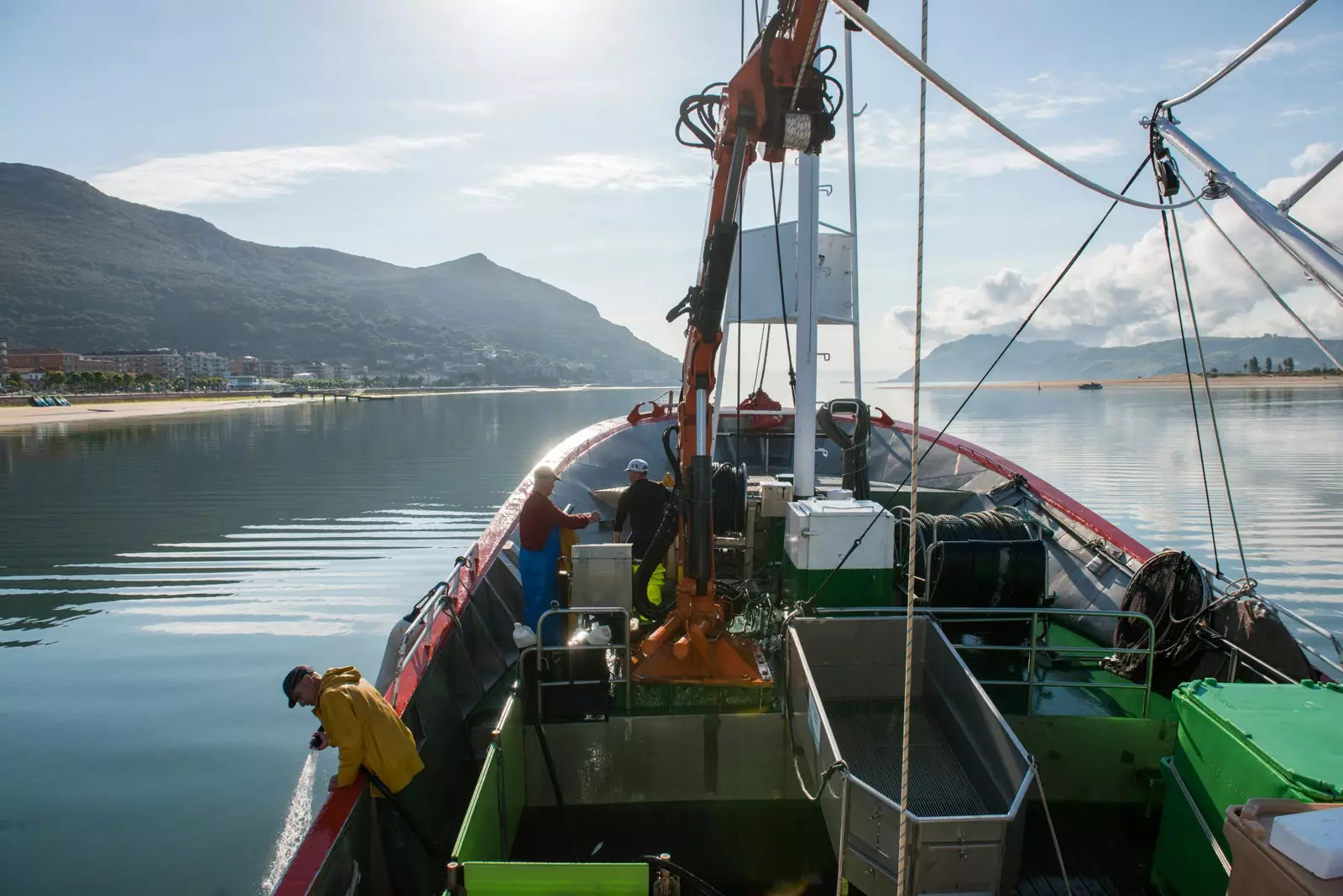
Anchovy fishing, Cantabria.
An inverse process experienced the salting industry of Cantabria. Until almost the beginning of the Great War, preserves and pickles had been part of the economy of their towns coastal.
However, from that time on, the salting industry is gaining ground. The book tells it very well. A sea of preserves, edited by Consortium Group, national and international leader in the anchovy sector, and FESBAL (Spanish Federation of Food Banks): “In 1907 there were already 38 canning establishments in Santoña, of which 25 were salted fish”.
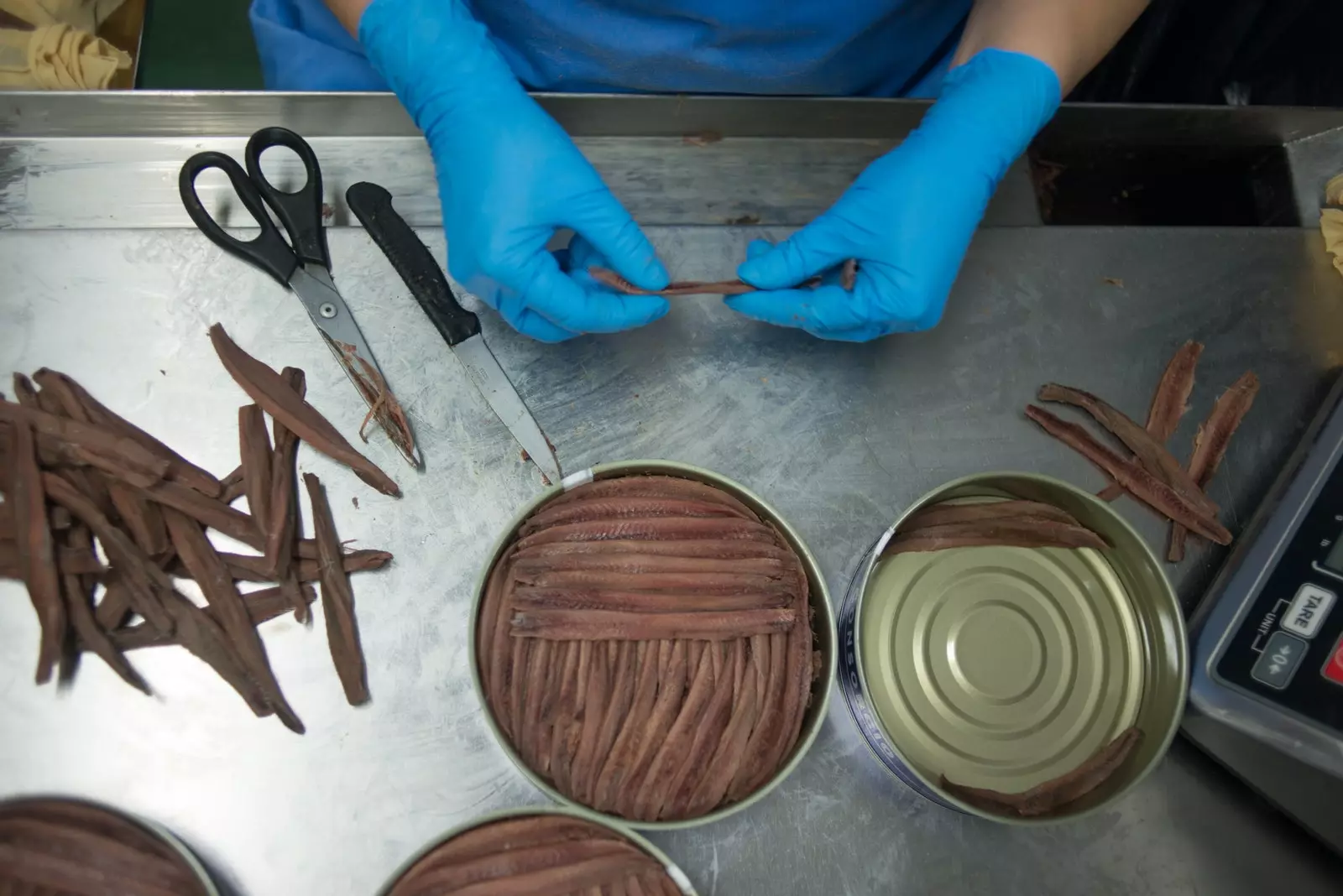
Anchovy process in Santoña, Cantabria.
But what is the technique, that in which the bocartes (as the anchovy is originally known) were alternated with layers of salt in the barrels for months, they brought her salatori. Italian emigrants they brought this technique at the end of the 19th century. They arrived on the coast, the time of year when the future anchovies are at their perfect point to be caught. The Cantabrian attracted them; your products, more.
Those salatori established the salting activity throughout the North Coast, since Santander to the Gipuzkoan coasts. They salted, preserved and returned to Italy. But little by little the evolution of the sector led them to settle in Santoña.
From their own companies, they kept the fish that trawlers and steamboats captured with the fence technique, a system that prevents the deterioration of the seabed. Are you still fishing with the fence technique? Ignacio Corral, from Grupo Consorcio, says that of course. "Is a surface fishing technique, sustainable because it does not drag the seabed”.
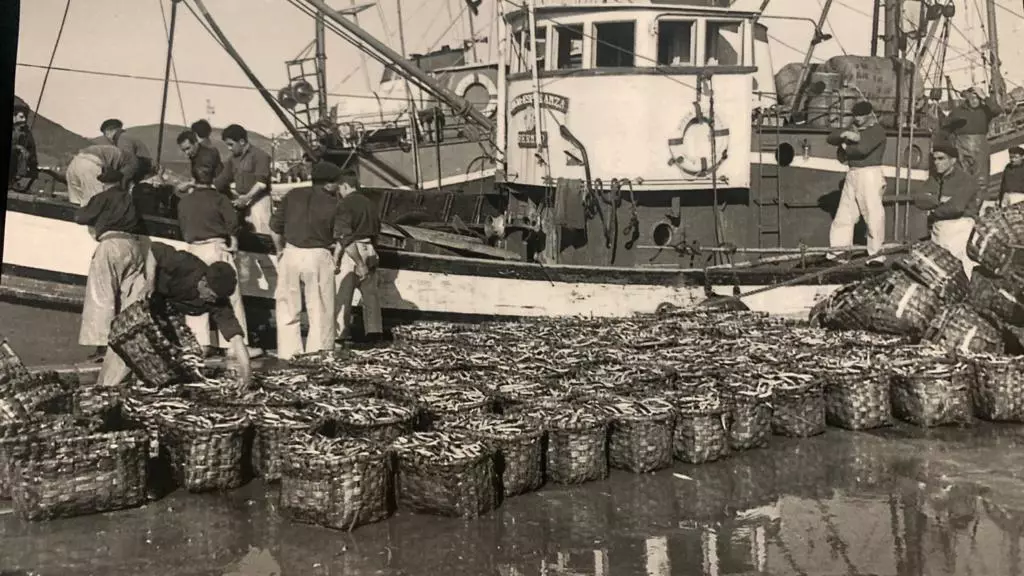
The Hermitage Pilar in the unloading dock, Cantabria.
In towns whose economy moves with the swell, its people are already living history. Pablo Argós is the patron saint of the Hermitage Pilar. Forty-four years old, and son, nephew and grandson of fishermen. "Practically I grew up on the dock I've always wanted to go to sea."
The heart of your day to day is the bocarte that they later sell to the Consortium Group. “Our base port is in Santoña, we are fifteen crew that between April and June we spend the day in the Bay of Biscay, although with climate change the bocarte is already ahead of March”.
It's intense, says Pablo, but today there are good media. “From that wooden boat, which smelled of diesel and made me dizzy, Nowadays things have changed a lot. Today we even have Digital +.”
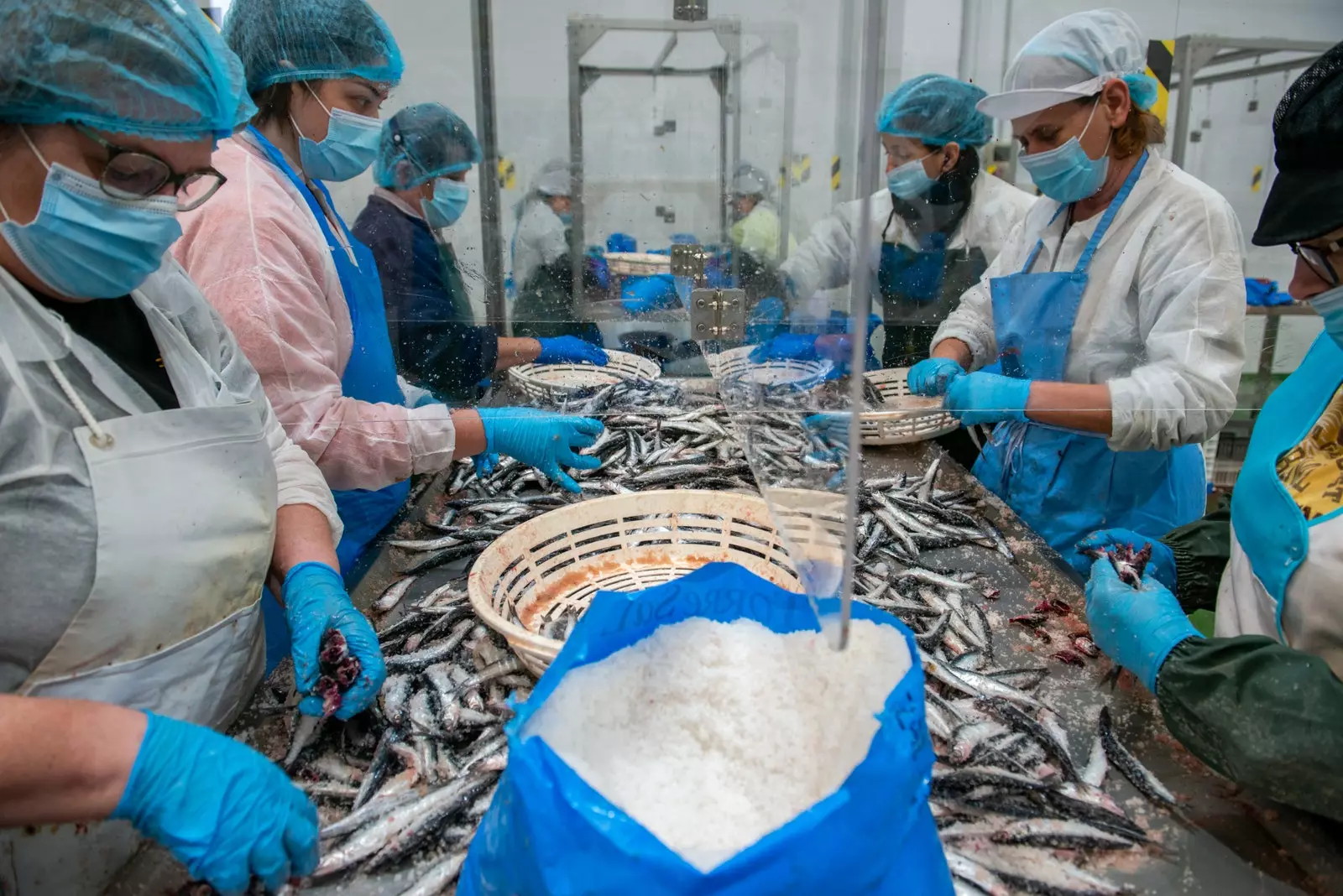
Anchovy process, Santoña.
They are also family legacy, and therefore historical, the women who make anchovies every day. “Anchovy sobadoras continue to be 100% women, in Cantabria and in our company. Men have always gone out to sea and women have made the preserves. This has translated into generations of women with an extraordinary knowledge of purely artisan elaboration, transferred from mothers to daughters”, says Valeria Piaggio from Grupo Consorcio.
They decapitate, rub (remove the skin with a specific net), cut the gut and tail, wash and dry. one by one By hand. It is the craft of conserving the sea, a nod to those Phoenicians who brought fish in amphorae, our original canned food.
count the book A Sea of Preserves that, when the humidity disappears, precision begins: the central shinbone is removed, they are cleaned from the head to the tail (this is called passing the mug) and then that bocarte is already anchovy. Divided into two perfect loins, ready to pack in olive oil. Ready for the vermouth. Packaged in cans, in octavilos, in tambourines.
"Cantabria represents a share that almost reaches 80% of the companies in the canning salting sector in Spain, of which more than 60 are located in Santoña, Laredo, Colindres and Castro Urdiales”. Despite the fact that it is increasingly difficult to find people who want to dedicate themselves to canning, more than 2,000 people in Cantabria work in the sector.
Already at the table, the Cantabrian anchovy is a faithful guest of gastronomic emblems such as The House of the Jew, by Sergio Bastard, a chef who in this matter of salting relies on a fetish as a flavor enhancer, brine, a saline solution derived from salted anchovies. EITHER Nacho Solana, from the homonymous restaurant.
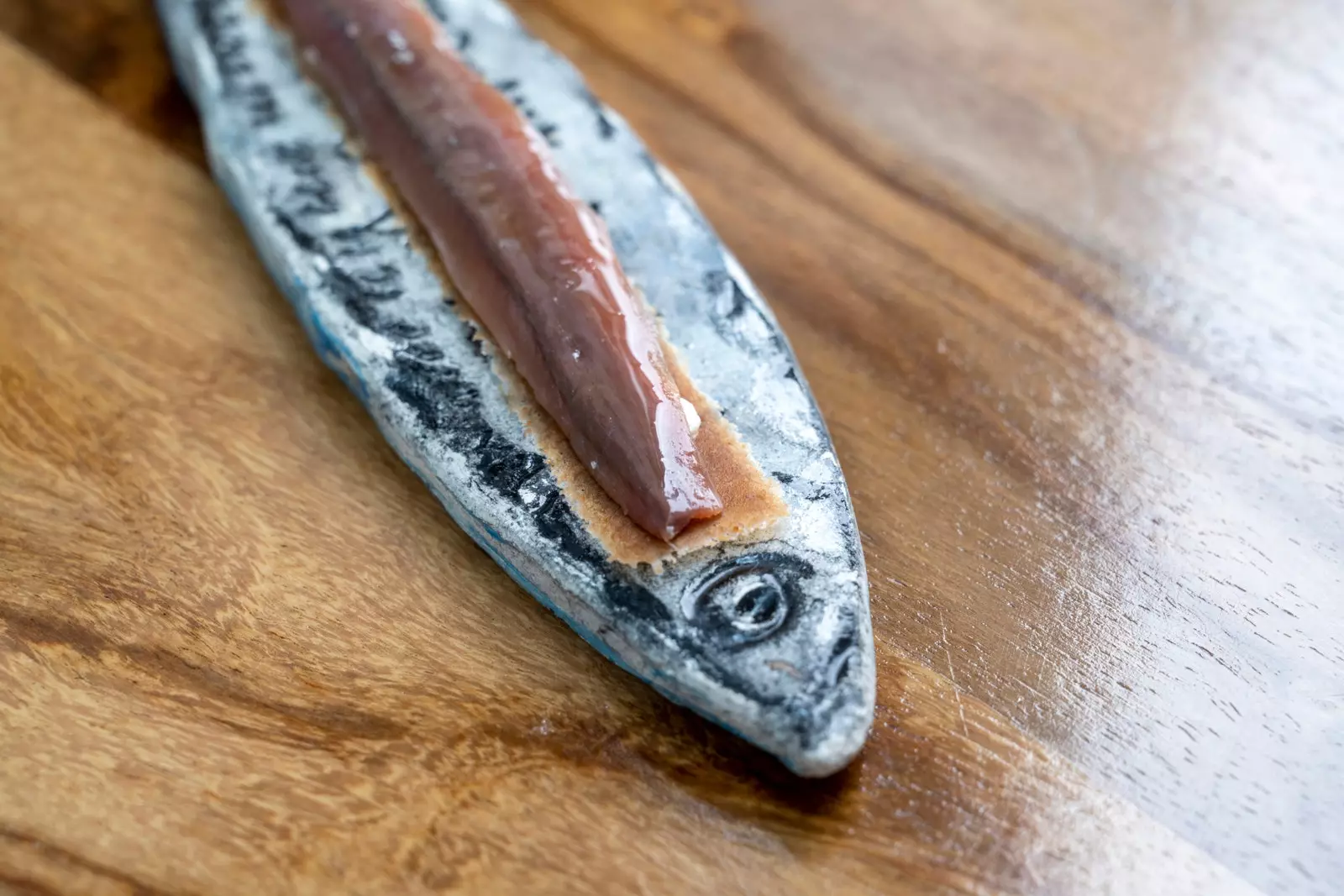
Anchovies, crispy caramelized and coffee at La Casona del Judío, Cantabria.
Both, along with other colleagues in the sector, have put their altruistic creativity at the service of his beloved Cantabrian, preparing recipes for “A Sea of Conservas”. Always devoting patience and practice, following in the wake of those legendary salatori.
